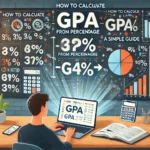Variance percentage is a crucial metric in statistics, finance, business, and data analysis. It helps determine how much data points deviate from the average, providing insights into performance, risk, and quality control. In this guide, we’ll explore how to calculate variance percentage with real-life examples of Sam and Elena.
Understanding Variance Percentage
Variance percentage measures the deviation of a set of values from the mean as a percentage. It is widely used in finance (investment risk assessment), business (performance tracking), and science (experimental data analysis).
Formula for Variance Percentage
To calculate variance percentage, follow these steps:
- Find the mean (average) of the dataset.
- Calculate the squared differences between each data point and the mean.
- Find the variance (average of squared differences).
- Convert variance to percentage relative to the mean.
The variance percentage formula is:
Where:
- Variance = The average of squared differences from the mean.
- Mean = The average of all values in the dataset.
Why Variance Percentage Matters?
Understanding variance percentage is essential because it allows businesses and individuals to make informed decisions based on data consistency. High variance percentages indicate significant fluctuations, which can be risky in financial investments or product quality assurance.
Applications in Different Fields
Finance
Investors use variance percentage to assess the stability of stocks, mutual funds, and other financial assets. A high variance percentage suggests greater investment risk, while a lower variance percentage implies a more stable return.
Business Performance
Companies analyze variance percentages in sales and revenue to determine trends. If a business experiences inconsistent profits, it may need to adjust its strategy.
Manufacturing and Quality Control
Manufacturers use variance percentage to measure production consistency. High variance in product dimensions or weight could indicate quality issues that need resolution.
Education and Student Performance
Educators and institutions evaluate student performance by analyzing the variance percentage in test scores. This helps in identifying areas requiring improvement.
Real-Life Example 1: Sam’s Monthly Sales Performance

Sam is a digital marketer who tracks his monthly revenue. Here’s his earnings data (in USD) over six months:
$3,200, $2,800, $3,500, $3,000, $3,400, $3,100
Calculate the Mean:
Calculate Variance: (Square each difference from the mean, find the average)
Calculate Variance Percentage:
So, Sam’s monthly sales performance variance percentage is 5.99%.
Real-Life Example 2: Elena’s Investment Returns

Elena invests in stocks and wants to measure the variance percentage of her monthly portfolio returns:
5.2%, 4.8%, 6.0%, 5.5%, 5.9%, 4.7%
Following the same process, we find:
- Mean return = 5.35%
- Variance = 0.173%
- Variance Percentage = (0.173 / 5.35) × 100 = 3.23%
Elena’s investment return variance percentage is 3.23%, meaning her returns are relatively stable.
How to Reduce High Variance Percentage?
- In Finance: Diversify investments to stabilize returns.
- In Business: Adjust marketing strategies and improve customer retention.
- In Manufacturing: Implement strict quality control procedures.
Conclusion
Variance percentage is a powerful metric for measuring fluctuations in data. Whether analyzing sales performance, investment returns, or scientific data, understanding this concept helps in decision-making and risk assessment.
By applying variance percentage calculations, Sam can optimize his marketing strategies, and Elena can make informed investment decisions.
Want to track your variance percentage? Try our Variance Percentage Calculator today!
With more detailed insights, explanations, and additional real-life examples, this expanded version ensures a more thorough understanding of variance percentage.


